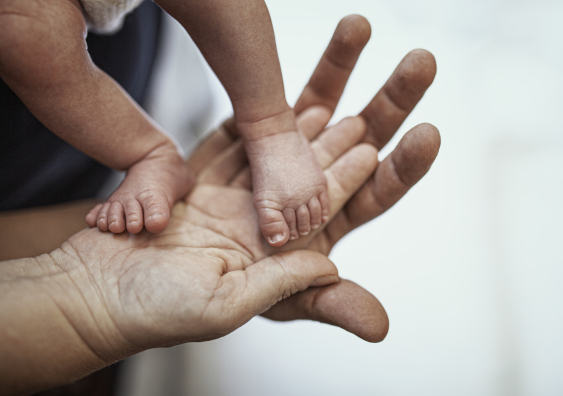One in three women have a baby in their first IVF cycle: report
The annual IVF report from UNSW reveals the latest numbers and trends in assisted reproductive technology.
The annual IVF report from UNSW reveals the latest numbers and trends in assisted reproductive technology.

One in three women successfully have a baby in their first IVF cycle, a new report by UNSW Sydney medical researchers shows.
The 2021 Australian and New Zealand Assisted Reproduction Database (ANZARD) report, opens in a new window – the most recent year for which complete IVF data is available – found 37.1% of women who commenced Assisted Reproductive Technology (ART) achieved a live birth in their first complete ART cycle. The annual IVF report also showed women had at least a 53.6% chance of achieving a live birth after three complete ART cycles.
ART success rates decreased with age. Women aged between 30 and 34 had at least a 67.8% chance of achieving a live birth after three complete ART cycles, while women aged 40-44 had at least a 20.3% chance.
“These estimates can be used when counselling women about their likelihood of having a baby using ART treatment and to inform public policy,” says Professor Georgina Chambers, lead author of the report and Director of the National Perinatal Epidemiology and Statistics Unit at UNSW Medicine & Health.
ART is a group of procedures that involve the in vitro (outside of the body) handling of oocytes (eggs) and sperm to establish a pregnancy. Each ART treatment involves several stages, generally called an ART treatment cycle. The embryos transferred to a female patient can either originate from the cycle in which they were created (fresh cycle) or be frozen (cryopreserved) and thawed before transfer (thaw cycle). A complete ART cycle includes embryos transferred during the embryo creation cycle and any subsequent frozen embryo transfer cycles.
“Cumulative longitudinal birth rates based on complete ART cycles are meaningful estimates of the success of ART treatment, reflecting contemporary clinical practice and encouraging safe embryo transfer practices,” says Prof. Chambers.
The report also showed that, on average, one in four women did not continue treatment after a failed cycle.
“There are many reasons why women elect not to continue treatment, including the psychological, physiological and financial stress that can be associated with infertility and its treatment,” says Professor Luk Rombauts, the President of the Fertility Society of Australia and New Zealand, opens in a new window (FSANZ), which funds the annual ANZARD report.
In 2021, 111,253 ART treatment cycles were performed in Australia and New Zealand resulting in the birth of 20,690 babies, a record high for IVF medical treatments. From 2020, this represents an increase in cycles of 17.1% in Australia and 7.1% in New Zealand and a 12% increase in the number of babies born following IVF treatment. One in 18 children born in Australia and one in 27 born in New Zealand were conceived through ART treatment.
“With over 20,000 babies born through these treatments, it's evident that ART is a significant contributor to our nation's growth and a testament to the resilience and determination of those seeking to build their families,” says Prof. Rombauts.
In 2021, there were a total of 5881 fertility preservation cycles conducted, a 61.5% increase on 2020. These cycles involve freezing all suitable eggs or embryos for future use. Notably, 10.5% of these cycles were for women preserving their fertility due to a cancer diagnosis, with the remaining for other medical or non-medical reasons.
“The rise in elective egg freezing is something that has been observed globally as a means for women to extend their fertility,” says Prof. Rombauts.
The proportion of embryo transfer cycles that used embryos fertilised using intracytoplasmic sperm injection (ICSI) continued to decrease, from 62.2% in 2017 to 55.6% in 2021.
Read more: One in three IVF cycles undertaken due to male infertility: report, opens in a new window
Dr Petra Wale, a senior embryologist and Vice President of FSANZ explains the ICSI technique was originally developed to address male infertility issues.
“It was designed to assist couples where the male partner had problems with sperm quality, quantity, or motility, making it difficult for natural fertilisation to occur,” Dr Wale says. “ICSI involves injecting a single sperm directly into an egg to facilitate fertilisation, overcoming some of the challenges associated with male infertility.
“Its reduced utilization shows the sector is responding to emerging evidence indicating that ICSI may not yield discernible benefits for couples without male infertility issues.”
The YourIVFSuccess, opens in a new window website produced by UNSW, which includes an IVF Success Estimator and a searchable database of the success rates for all accredited IVF clinics in Australia, will be updated later this year to include more recent IVF clinic success rates. The estimator will be updated to include relevance for single women, LGBTQI+ and those contemplating using donor eggs or sperm.
Read more: New national IVF clinic success rates released, opens in a new window
The ANZARD report contains data from all 95 IVF clinics operating in Australia and New Zealand. It presents information about IVF cycles undertaken in 2021 and the resulting babies born in 2021 and 2022.
The data presented in the report is managed by the National Perinatal Epidemiology and Statistics Unit (NPESU) within UNSW’s Centre for Big Data Research in Health and the School of Women’s and Children’s Health.